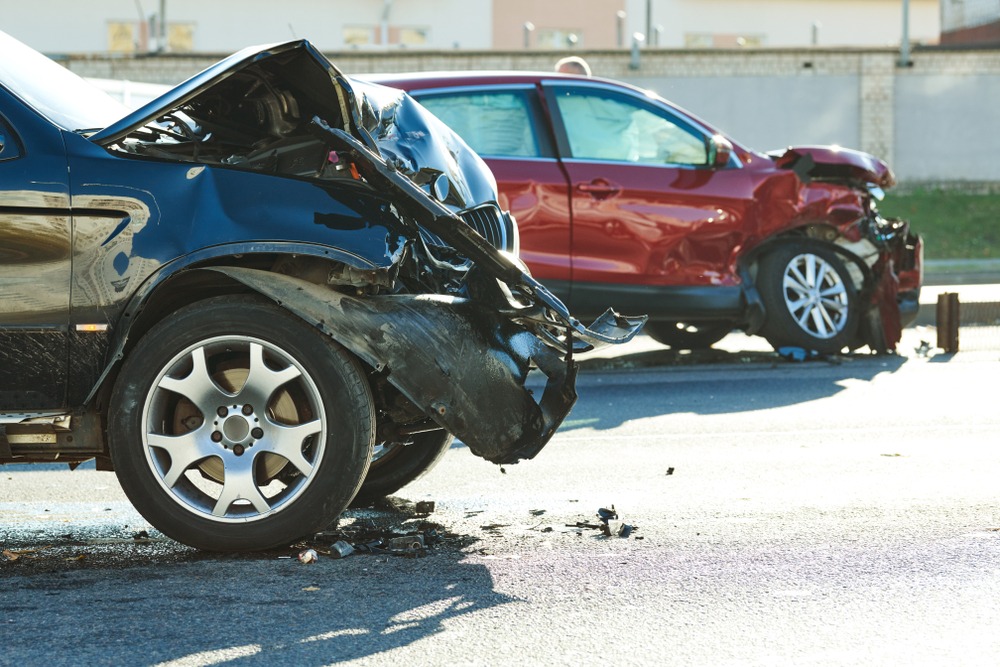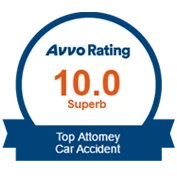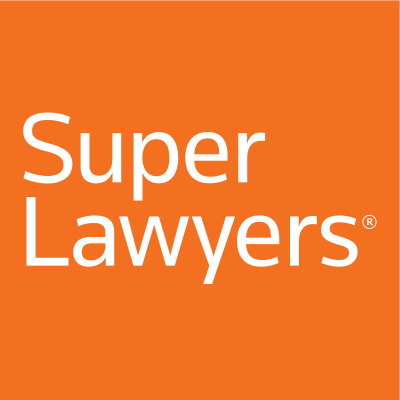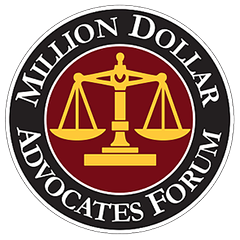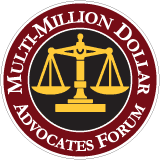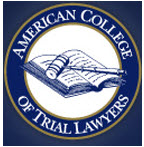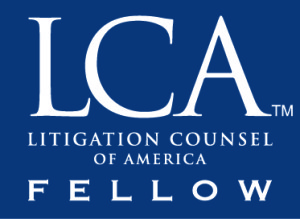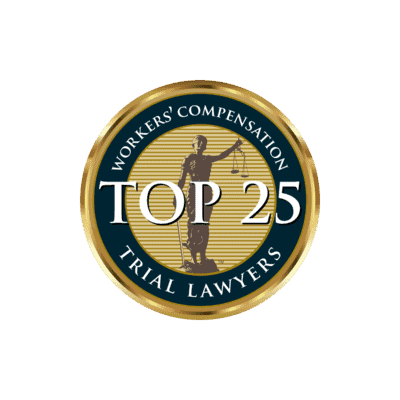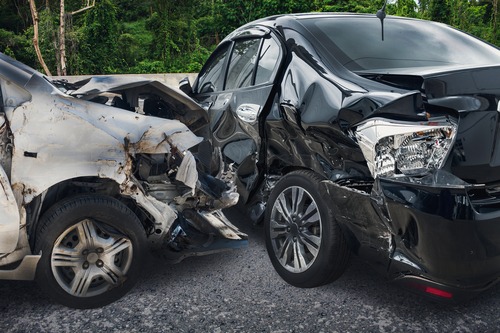
Who is at Fault for a T-bone Accident?
Proving that another driver is at fault for a T-bone accident requires strong evidence demonstrating their negligence. Traffic camera footage, eyewitness testimony, and police reports can be vital in establishing fault. If the at-fault driver ran a red light, failed to yield, or was speeding, these violations can prove liability. Vehicle damage and accident reconstruction analysis can also show exactly how the collision occurred.
A skilled motor vehicle accident attorney can be invaluable in handling your third-party claim or lawsuit. They will gather and present evidence, negotiate with insurance companies and ensure you receive fair compensation for medical expenses, lost income, and pain and suffering.
If the insurance company disputes your claim or offers you a low settlement, your Fort Lee car accident attorney can take the case to court and fight for the compensation you deserve. Their experience can significantly improve your chances of receiving full and fair compensation for your injuries.
How Do Negligent Drivers Cause T-bone Accidents?
T-bone accidents, also known as side-impact collisions, often happen because of negligent driving. These crashes occur when the front of one vehicle collides with the side of another, usually at intersections. One of the most common reasons for these accidents is when a driver runs a red light or stop sign. Whether due to distraction, impatience, or reckless behavior, failing to stop when required can put cross-traffic at serious risk. Drivers who ignore traffic signals often fail to notice vehicles that have the right-of-way, leading to violent collisions.
Another major cause is failing to yield properly. Many intersections have specific rules regarding which driver has the right-of-way, but some people either misunderstand or disregard them. This can happen when making left turns – especially if a driver misjudges the speed of an oncoming car or assumes they can turn before the other vehicle reaches the intersection. In these moments, a driver’s impatience or poor decision-making can result in a devastating crash.
Speeding is another factor that contributes to T-bone accidents. When drivers go too fast, they reduce their ability to react to sudden changes, such as another car crossing their path. High speeds also make it harder to stop in time, increasing the likelihood of running a red light or failing to avoid another vehicle. In addition, excessive speed makes the force of a collision much more severe, leading to greater injuries and damage.
Distracted driving plays a significant role in many of these accidents as well. Drivers who are texting, adjusting their GPS devices, or simply not paying attention may fail to see a stop sign or miss a changing traffic signal. Even a momentary lapse in concentration can lead to a tragic outcome. When a driver isn’t fully aware of their surroundings, they put themselves and others in danger.
Drunk or impaired driving is another serious issue. Alcohol and drugs slow reaction times and impair judgment, making it much more likely that a driver will ignore traffic signals or make reckless moves. Someone under the influence may not recognize when they need to stop or may react too slowly to avoid a crash. Unfortunately, these accidents are often severe because the impaired driver may not brake or swerve in time to lessen the impact.
Most Common Injuries that Victims Suffer in T-bone Accidents
T-bone accidents are some of the most dangerous crashes on the road, often leading to serious injuries for those involved. When a negligent driver causes this type of collision, the victims usually experience significant trauma due to the limited protection on the sides of a vehicle. Unlike head-on or rear-end crashes, where the front and back of a car can absorb much of the impact, side-impact collisions leave passengers more exposed to severe injuries.
One of the most common injuries in T-bone accidents is whiplash. The sudden force of impact causes a person’s head to jerk violently, straining the muscles and ligaments in the neck. This can lead to intense pain, stiffness, and long-term mobility issues. In severe cases, whiplash can result in chronic discomfort that affects a person’s ability to work or perform daily activities.
Head injuries are another major concern. If the victim’s head strikes the window, door frame, or another part of the car, they may suffer a concussion or other traumatic brain injury. Even if there is no visible wound, brain injuries can have lasting effects, such as memory loss, difficulty concentrating, dizziness, or changes in mood and behavior. In more severe cases, brain trauma can lead to permanent cognitive impairments.
Broken bones are also common in T-bone crashes, particularly in the ribs, arms, and legs. The force of impact can crush parts of the body against the door or dashboard, causing fractures. Rib injuries are especially dangerous because broken ribs can puncture internal organs, leading to life-threatening complications. Victims may require extensive medical treatment, including surgery and physical therapy, to recover from these injuries.
Spinal cord injuries are among the most devastating outcomes of a T-bone accident. The sudden jolt of a collision can damage the spine, leading to partial or complete paralysis. Even less severe spinal injuries can cause chronic pain, nerve damage, and limited mobility. Victims often face long and difficult recoveries, with some never regaining full function.
Internal injuries, such as organ damage or internal bleeding, can be life-threatening if not treated immediately. The force of impact can cause trauma to the liver, spleen, or other vital organs, sometimes without any obvious external signs. If internal bleeding is not detected in time, it can lead to severe complications or death.
Proving Fault in a T-bone Accident Case
Proving fault in a T-bone accident case requires strong evidence to demonstrate that one driver acted negligently, causing the crash. Since these accidents usually occur at intersections, determining liability often comes down to which driver had the right-of-way. To establish fault, the injured party must show that the other driver violated traffic laws, acted recklessly, or failed to take reasonable care while driving.
One of the most useful types of evidence in a T-bone accident case is traffic camera footage. Many intersections are equipped with cameras that capture real-time video of traffic movements. If a negligent driver ran a red light or stop sign, video evidence can clearly capture the violation, making it difficult for them to deny fault. Even if the intersection does not have cameras, nearby businesses or security cameras from homes may have recorded the crash.
Eyewitness testimony also plays a key role in proving negligence. People who saw the accident happen, such as pedestrians or other drivers, can provide statements about what they observed. Their accounts can confirm details like which driver had the green light, whether one vehicle was speeding, or if a driver appeared distracted before the collision. Witness statements add credibility to the injured party’s claim, especially when multiple people provide similar descriptions of the crash.
Police reports are another critical form of evidence. When officers respond to an accident, they assess the scene, take statements from drivers and witnesses, and document important details. If the officer determines that one driver violated traffic laws – such as by running a red light or failing to yield – they may include this information in their report. A police report that assigns fault to the other driver can be a powerful piece of evidence in a third-party insurance claim or lawsuit.
Vehicle damage and accident reconstruction can also help to establish fault. The location of the damage on each car often indicates how the accident occurred. For example, if one vehicle has front-end damage and the other has damage on its side, it suggests that the first car struck the second. Accident reconstruction experts can analyze skid marks, impact angles, and other factors to determine how the crash happened.
Finally, medical records can support a claim by linking injuries directly to the accident. If a victim receives immediate medical care, their records will confirm that their injuries resulted from the collision, strengthening their case for compensation.
Will My Third-Party Accident Case Need to be Litigated?
Whether a T-bone accident case needs to be litigated depends on several key factors, including the strength of the evidence, the willingness of the insurance companies to offer fair compensation, and the severity of the injuries involved. Litigation occurs when the parties involved cannot reach a settlement through negotiation, making it necessary to take the case to court.

One major factor that influences whether a case goes to litigation is the clarity of fault.
If strong evidence proves that the other driver was negligent – such as traffic camera footage, witness statements, or a police report assigning blame – the insurance company may be more likely to settle.
However, if fault is disputed, the case may require litigation to determine who is responsible.
The severity of injuries also plays a significant role. When an accident results in serious injuries, the medical expenses, lost income, and pain and suffering can be substantial. Insurance companies often try to minimize payouts, especially in high-value cases, by offering settlements that do not fully cover the victim’s damages. If the insurance company refuses to offer a fair amount, the injured party may have no choice but to file a lawsuit to seek full compensation.
Disputes over damages can also lead to litigation. Even if the other driver’s fault is clear, the insurance company may argue that the injuries are not as severe as claimed or that some medical treatments were unnecessary. They may also undervalue lost earnings or emotional distress. If the victim and the insurance company cannot agree on the amount of compensation, the case may need to go to court for a judge or jury to decide.
The willingness of both parties to negotiate is another important factor. If the insurance company refuses to negotiate in good faith or delays the process, filing a lawsuit may be the best way to move the case forward. In some instances, just the act of filing a lawsuit can pressure the insurance company into offering a fair settlement before the case ever reaches trial.
Ultimately, litigation is necessary when negotiations fail, and the injured party must take legal action to recover the compensation they deserve. While many cases settle outside of court, having a car accident lawyer with a strong strategy can help ensure the best possible outcome.
Types of Damages You Can Recover in a T-bone Crash Case
If you have suffered an injury in a T-bone accident resulting from a negligent driver, you may be entitled to several types of compensable damages. This compensation is meant to help you recover from your losses – both financial and personal. The exact amount you can receive depends on the severity of your injuries, the effects on your life, and the strength of your case.
One of the most significant forms of damages from a car accident is for medical expenses. A T-bone accident can cause serious injuries, requiring emergency treatment, hospital stays, surgeries, physical therapy, and long-term medical care. Compensation may cover all past, present, and future medical costs related to the accident. This includes doctor visits, prescription medications, rehabilitation, and any necessary medical equipment, such as wheelchairs or braces.
Lost income is another major category of damages. If your injuries prevent you from working, either temporarily or permanently, you can recover the income you have lost. This includes not only the income you missed while recovering but also any loss of future earning capacity if your injuries prevent you from returning to your previous job – or working at all. If you have to take a lower-paying job due to your injuries, you may be compensated for the difference in income.
Pain and suffering damages compensate for the physical pain and emotional distress resulting from the T-bone accident. Unlike medical bills or lost income, these damages are not based on specific financial losses, but rather on the effects, the injuries have had on your life. This includes chronic pain, emotional trauma, anxiety, depression, and loss of life enjoyment. In severe cases where injuries lead to permanent disabilities or disfigurement, the amount awarded for pain and suffering can be significant.
Property damage compensation covers the repair or replacement of your vehicle and any personal belongings damaged in the accident. If your car was totaled, you should receive compensation based on its fair market value.
In some cases, victims may also be awarded punitive damages. These are meant to punish the at-fault driver for reckless or intentional misconduct, such as driving under the influence or engaging in dangerous behavior. Punitive damages are not awarded in every case but may apply when the driver’s actions were especially egregious.
Talk with an Experienced Motor Vehicle Accident Lawyer Today
If you sustained injuries in a T-bone crash that a negligent driver caused, a skilled motor vehicle accident attorney can help. Your lawyer will swiftly investigate the circumstances leading up to your accident, determine your options, and pursue the maximum compensation that’s available to you in your case.



